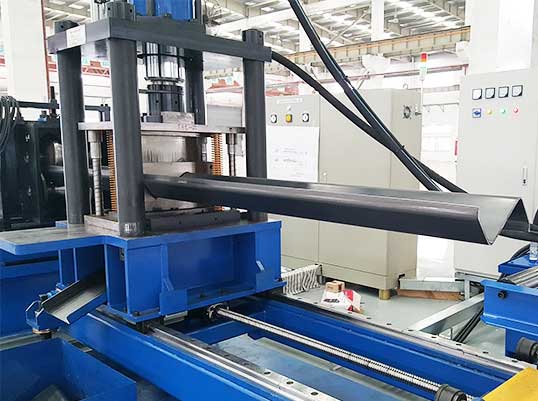Navigation Menu
Contact Us
- Email:
- info@wxavatar.com
- Address:
- Yurong Village, Yuqi Street, Huishan District, Wuxi, China.
Release Date:Mar 18, 2025 Visit:56 Source:Roll Forming Machine Factory
Key Components of Solar Racking Systems
1.Mounting Structure:
Rails: Long metal beams (often aluminum or galvanized steel) that run parallel to the rows of solar panels. Panels are clamped to these rails.
Brackets/Clamps: Attach panels to the rails and allow for adjustments in positioning.
Mounting Hardware: Anchors the entire system to a roof, ground, or other surfaces (e.g., bolts, screws, or ballast weights for non-penetrative systems).
2.Foundation/Base:
Roof Mounts: Use flashing, sealants, and penetrations to attach to rooftops (e.g., tilted or flush-mounted systems).
Ground Mounts: Secured to concrete footings, driven piles, or helical anchors embedded in the ground.
Ballasted Systems: Weighted bases (e.g., concrete blocks) for flat roofs or ground installations without penetrations.
3.Tilt and Orientation:
Fixed-tilt systems angle panels at a predetermined optimal angle (based on latitude) to maximize sun exposure.
Adjustable systems allow seasonal tilt changes.
Tracking systems (single-axis or dual-axis) automatically rotate panels to follow the sun’s path, boosting energy output by up to 25%.
How Solar Racking Works: Step-by-Step
1.Site Preparation:
For rooftops: Inspect the roof’s structural integrity and install waterproofing/flashing where brackets penetrate.
For ground mounts: Level the terrain and install foundations (e.g., concrete piers).
2.Install Mounting Hardware:
Attach brackets or rails to the roof, ground, or other surfaces using bolts, screws, or ballast weights.
3.Assemble Rails:
Securely fasten rails to the brackets, ensuring they’re level and spaced correctly for panel dimensions.
4.Attach Solar Panels:
Use clamps to fix panels to the rails. Mid-clamps and end-clamps hold panels in place without drilling into the glass.
5.Grounding:
Electrically bond the racking system to prevent lightning damage and ensure safety.
6.Optimize Tilt/Angle:
Adjust the tilt (manually or via tracking systems) to align with the sun’s path for maximum energy production.

Types of Solar Racking Systems
1.Roof-Mounted:
Flush Mounts: Panels lie flat against the roof (common for sloped roofs).
Tilted Mounts: Raise panels to a steeper angle for better sun exposure.
Ballasted Systems: Use weights instead of roof penetrations (ideal for flat commercial roofs).
2.Ground-Mounted:
Fixed or tracking systems installed on open land, often used for large solar farms.
3.Pole-Mounted:
Elevate panels on poles, useful for small-scale installations or areas with shading issues.
4.Carport/Canopy Mounts:
Dual-purpose structures that provide shade for parking lots while generating solar energy.
Key Considerations
Durability: Racking systems must resist corrosion (using materials like aluminum or galvanized steel) and handle wind/snow loads.
Efficiency: Proper tilt and orientation maximize energy output.
Cost: Roof mounts are cheaper than ground or tracking systems, which require more materials and labor.
Local Codes: Compliance with building codes, zoning laws, and weight restrictions is critical.
Why Solar Racking Matters
Safety: Secures panels during extreme weather.
Performance: Proper alignment ensures optimal energy generation.
Longevity: Protects panels and rooftops from damage over decades.
In short, solar racking transforms individual panels into a stable, efficient array, forming the backbone of any solar energy system.